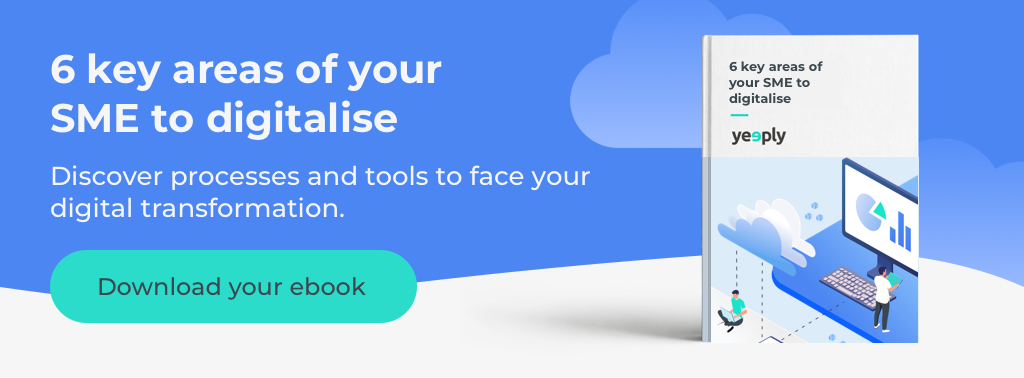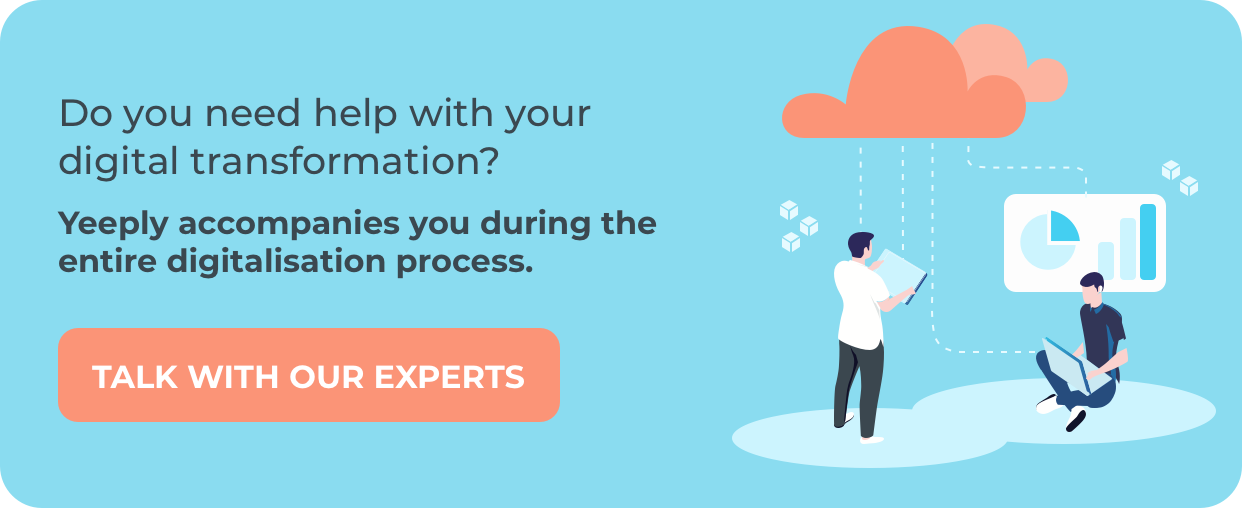Nowadays, it’s pretty much uncommon to find someone who has never heard about cloud migration.
As many of our readers may already surmise, everything that is related to data management entails business opportunities that are generally quite juicy, and cloud migration is no exception.
According to figures released by the portal Markets and Markets, the market for cloud migration services was $ 272 billion in 2018 and it’s estimated to attain $ 623.3 billion by 2023. And this is just for the American market, so we can assume that the global value is somewhat of an astronomical figure.
Index
- What is cloud computing?
- Why is cloud computing important regarding digital transformation?
- Possible benefits of having a cloud migration strategy
- Which cloud service model do you need?
- Proof of Concept
What is cloud computing?
Cloud computing is a data storage system that stores data in an external server instead of in a computer’s hard drive. These external servers located throughout the globe are jointly referred to as the “cloud”. We can access these stored data quickly and easily at will over the Internet.
Therefore, as long as we have an Internet connection, this system allows us to work with all our information on any device, time and place, without taking up space on our local hard drive.
Why is cloud computing important when it comes to digital transformation?
Cloud services have been the key element to trigger the digital transformation of companies, but how does cloud computing contribute to digital transformation?
1. Flexibility
A growing company will have to change its business strategy several times throughout its life and cloud computing offers the possibility of avoiding heavy investments in structural resources. Cloud technologies enable making changes on the fly, consequently permitting companies to be agile and flexible.
2. Profitability
Cloud technologies offer a scalable service model in which a company only pays for the resources used.
3. Security
There is a constant risk of losing critical information to unexpected system shutdowns, attacks, etc. if data are stored internally. On the other hand, cloud data hosting offers the capability of easily creating multiple backups to prevent disasters.
4. Quick creation of prototypes
For digital transformation to work, a company needs to innovate, test, implement, and repeat this process continuously. Cloud computing allows you to test multiple applications on different platforms without having to set up the complex infrastructure.
5. Enhanced collaboration
This technology makes accessing files from any place and at any time possible, thus creating a proper collaboration and teamwork environment within the company.
➡ You may also be interested in: Top 5 digital transformation challenges (and how to overcome them)
Possible benefits of having a cloud migration strategy

These are some of the most common situations in which companies can take advantage of cloud computing benefits:
- When a company’s data traffic increases to a point where it becomes difficult to manage and the investment in resources required for satisfying such demand becomes quite significant.
- When there is a need to reduce operating costs while increasing the effectiveness of standardization processes (IT).
- When keeping up with ever-growing storage needs becomes increasingly difficult and expensive. In this case, cloud computing becomes an indispensable tool.
- When there is no way around having a distributed development team. Cloud computing environments allow employees to work remotely and access applications over the Internet.
- When there is a need to set up a disaster recovery system. Cloud systems can be deployed much more quickly and economically than traditional on-site systems based on data centres.
Which cloud service model do you need?
These are the most common cloud computing service models:
IaaS
IaaS (Infrastructure as a Service) encompasses all cloud services in which suppliers provide users with access to computing resources such as servers, storage, and networks. Companies using IaaS run their platforms and applications on infrastructure provided by a service provider like AWS, Azure, Google Cloud Platform, or Alibaba Cloud.
IaaS is a convenient option for companies that do not mind hosting their applications in third-party data centres and prefer to outsource their physical infrastructure to focus on development, implementation, and monitoring.
PaaS
PaaS (Platform as a Service) is a comprehensive development and deployment cloud environment with resources that enable integrating all kinds of apps: from simple cloud-based apps to sophisticated cloud-enabled business applications. Some examples of PaaS are AWS Elastic Beanstalk, Heroku, Google App Engine, or Engine Yard.
PaaS also reduces an app’s time to market, as most of the necessary software will be preloaded. Therefore, only implementing the app’s top layer will be required and, in some cases, this may narrow down to just the app’s binaries.
SaaS
SaaS (Software as a Solution) allows users to connect to cloud-based applications over the Internet. Cloud service providers offer these comprehensive software solutions on a pay-as-you-go basis. Some examples are services such as Google G Suite, Office 365, Salesforce, or NetSuite.
SaaS follows a delivery model in which centrally-hosted software is licensed through a subscription fee.
Proof of Concept (POC)
Creating a testing environment (Proof of Concept) is always a good idea before migrating the data resulting from all the work carried out by the company to the cloud. These models are not 100% infallible but will help anticipate some of the main issues we may encounter, as well as provide greater clarity and understanding regarding the challenges that the company may face.
Some items that should be discussed when carrying out a POC are:
- Performance comparisons with applications that already exist and are currently in use.
- Levels of complexity involved in the migration of the relevant apps.
- Network challenges that must be straightened out to achieve optimal performance in handling our data.
- Reliability of our system.
- Cloud provider support evaluation.
Planning a migration to the cloud? Let us lend you a helping hand! Tell us about what kind of support you need and we’ll get you in touch with the right experts.













